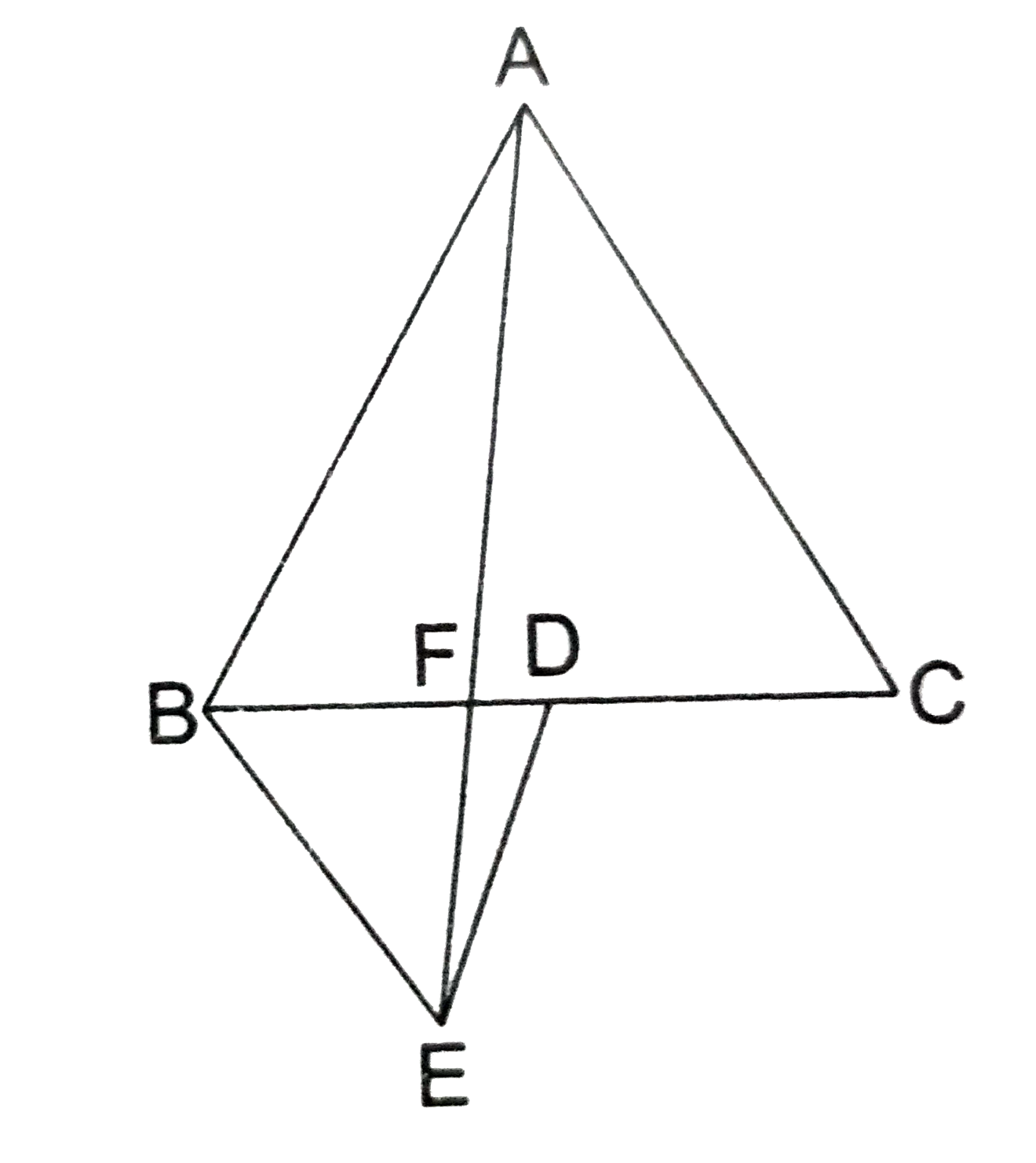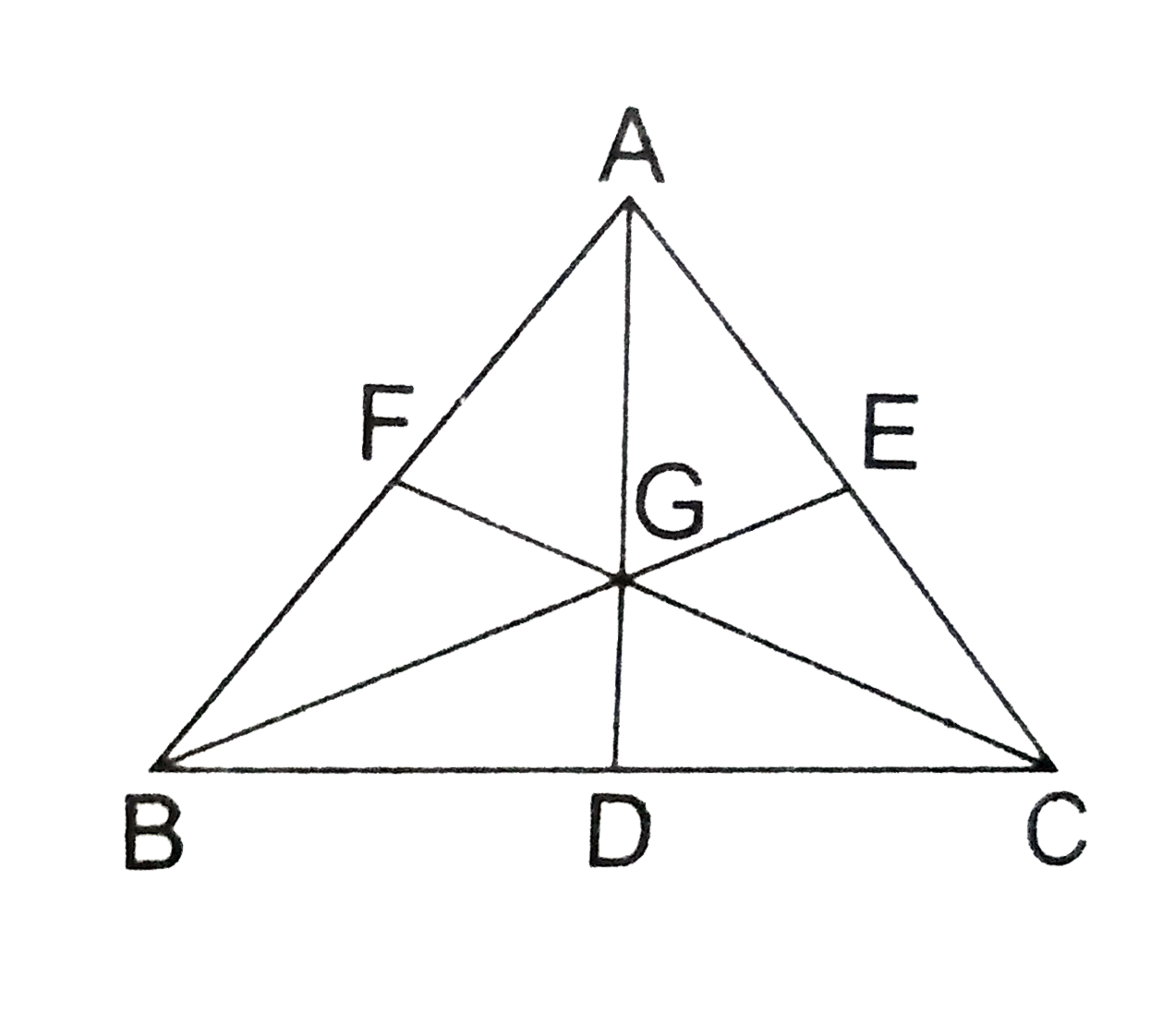ABCD is a tetrahedron such that each of the △ABC, △ABD and △ACD has a right angle at A. If ar(△ABC)=k1.ar(△ABD)=k2,ar(△BCD)=k3, then ar(△ACD) is
√k21+k22+k23
√k1k2k3k1+k2+k3
√∣∣k21+k22−k23∣∣
√∣∣k22−k21−k23∣∣
The correct Answer is:C
To solve the problem, we need to find the area of triangle ACD given the areas of triangles ABC, ABD, and BCD. Let's denote the areas as follows:
- ar(triangleABC)=k1
- ar(triangleABD)=k2
- ar(triangleBCD)=k3
- ar(triangleACD)=x (this is what we need to find)
Since each triangle has a right angle at A, we can use the relationship derived from the Pythagorean theorem in three dimensions.
1. Understanding the Right Angles:
Since triangles ABC, ABD, and ACD have right angles at A, we can apply the Pythagorean theorem in the context of areas. The areas of the triangles can be related through the equation:
ar(triangleABC)2+ar(triangleABD)2+ar(triangleACD)2=ar(triangleBCD)2
2. Substituting the Areas:
Substitute the known areas into the equation:
k21+k22+x2=k23
3. Rearranging the Equation:
To isolate x2, rearrange the equation:
x2=k23−k21−k22
4. Taking the Square Root:
Now, take the square root of both sides to find x:
x=√k23−k21−k22
5. Final Result:
Thus, the area of triangle ACD is given by:
ar(triangleACD)=√k23−k21−k22
Summary:
The area of triangle ACD can be computed using the areas of the other triangles as follows:
ar(triangleACD)=√k23−k21−k22
- ar(triangleABD)=k2
- ar(triangleBCD)=k3
- ar(triangleACD)=x (this is what we need to find)
Since triangles ABC, ABD, and ACD have right angles at A, we can apply the Pythagorean theorem in the context of areas. The areas of the triangles can be related through the equation:
ar(triangleABC)2+ar(triangleABD)2+ar(triangleACD)2=ar(triangleBCD)2
Substitute the known areas into the equation:
k21+k22+x2=k23
To isolate x2, rearrange the equation:
x2=k23−k21−k22
Now, take the square root of both sides to find x:
x=√k23−k21−k22
Thus, the area of triangle ACD is given by:
ar(triangleACD)=√k23−k21−k22
The area of triangle ACD can be computed using the areas of the other triangles as follows:
ar(triangleACD)=√k23−k21−k22
Topper's Solved these Questions
Similar Questions
Knowledge Check
If ABCD is a tetrahedron such that each △ABC,△ABDand△ACD has a right angle at A. If ar(△(ABC))=k1,ar(△ABD)=k2,ar(△BCD)=k3, then ar(triangleACD) is
A√k21+k22+k23B√k1k2k3k21+k22+k23C√∣∣(k21+k22−k23)∣∣D√∣∣(k21−k22−k23)∣∣In △ABC, if Rr≤2, and a=2, then △ is equal to (△=ar(△ABC)).
A3B9C√3D√34If △ABC - △PQR and BCQR = 14 then ar(△PQR)ar(△ABC) =
A14B41C116D161
In △ABC,∠B=60∘ and ∠C=75∘. If D is a point on side BC such that ar(△ABD)ar(△ACD)=1√3
find ∠BAD
View SolutionIn a triangle ABC, E is the mid-point of median AD. Show that ar(△BED)=14ar(△ABC).
View SolutionIn the adjoining figure, ABC and BDE are two equilateral triangle such that D is the midpoint of BC. If AE intersects BC at F, show that
(i)ar(△BDE)=14ar(△ABC)
(ii)ar(△BDE)=12ar(△BAE)
(iii)ar(△ABC)=2ar(△BEC)
(iv)ar(△BFE)=ar(△AFD)
(v)ar(△BFE)=2ar(△FED)
(vi)ar(△FED)=18ar(△AFC).

View SolutionIf △ABC~△DEF,BC=3EFandar(DABC)=117cm2 find area (△DEF).
View SolutionIf △ABC~△DEF,ar(△DEF)=100cm2andABDE=12, then ar(DABC) is
View Solution


